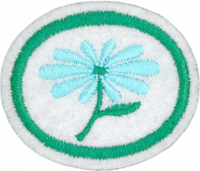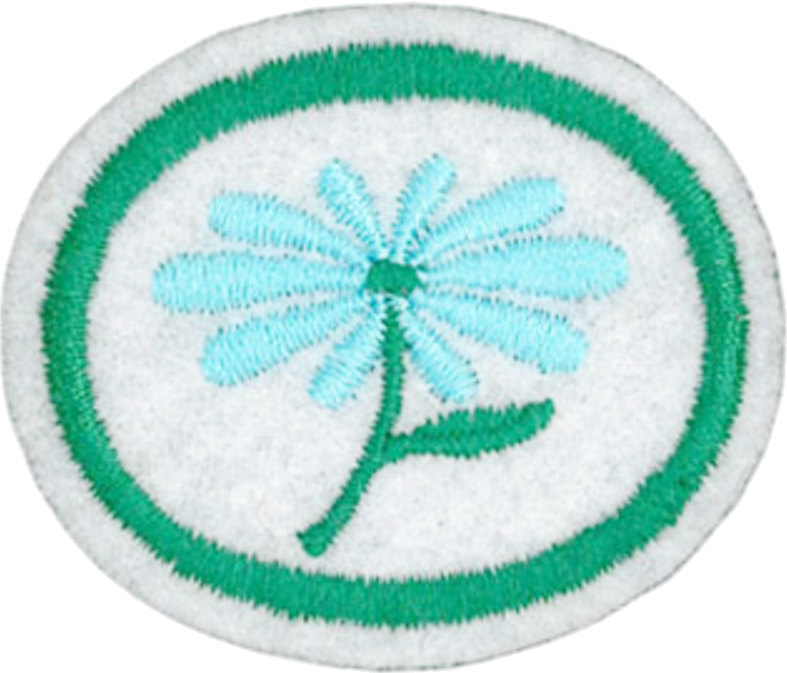Difference between revisions of "AY Honors/Flowers/Answer Key/es"
From Pathfinder Wiki
(Created page with "{{clear}}") |
(Updating to match new version of source page) |
||
| (19 intermediate revisions by 2 users not shown) | |||
| Line 1: | Line 1: | ||
| − | + | {{HonorSubpage}} | |
| − | + | <section begin="Body" /> | |
| − | {{ | ||
| − | |||
| − | |||
| − | |||
| − | |||
| − | |||
| − | |||
| − | |||
| − | }} | ||
| − | |||
| − | |||
| − | |||
| − | |||
| − | |||
| − | |||
| − | |||
| − | |||
| − | |||
| − | <section begin="Body" /> | ||
{{ansreq|page={{#titleparts:{{PAGENAME}}|2|1}}|num=1}} | {{ansreq|page={{#titleparts:{{PAGENAME}}|2|1}}|num=1}} | ||
<noinclude></noinclude> | <noinclude></noinclude> | ||
| − | <!-- 1. | + | <!-- 1. Dibujar o fotografiar 35 clases de flores e identificarlas correctamente. --> |
| − | |||
{{clear}} | {{clear}} | ||
| Line 53: | Line 33: | ||
{{ansreq|page={{#titleparts:{{PAGENAME}}|2|1}}|num=2}} | {{ansreq|page={{#titleparts:{{PAGENAME}}|2|1}}|num=2}} | ||
<noinclude></noinclude> | <noinclude></noinclude> | ||
| − | <!-- 2. | + | <!-- 2. Dibujar y etiquetar o bien señalar las partes de una flor: gineceo (pistilo), estambre, pétalo, sépalo --> |
| − | |||
| − | |||
| − | |||
| − | |||
| − | |||
| − | |||
<noinclude></noinclude> | <noinclude></noinclude> | ||
| Line 65: | Line 39: | ||
{{ansreq|page={{#titleparts:{{PAGENAME}}|2|1}}|num=3}} | {{ansreq|page={{#titleparts:{{PAGENAME}}|2|1}}|num=3}} | ||
<noinclude></noinclude> | <noinclude></noinclude> | ||
| − | <!-- 3. | + | <!-- 3. Nombrar seis familias de flores y sus características distintivas. Nombrar al menos dos flores en cada familia. --> |
| − | {{: | + | {{:AY Honors/Flower families/es}} |
<noinclude></noinclude> | <noinclude></noinclude> | ||
| Line 72: | Line 46: | ||
{{ansreq|page={{#titleparts:{{PAGENAME}}|2|1}}|num=4}} | {{ansreq|page={{#titleparts:{{PAGENAME}}|2|1}}|num=4}} | ||
<noinclude></noinclude> | <noinclude></noinclude> | ||
| − | <!-- 4. | + | <!-- 4. Describir la historia de vida de una flor, incluido el papel desempeñado por los insectos o el viento en la polinización. --> |
| − | |||
| − | |||
| − | |||
| − | |||
| − | |||
| − | |||
| − | |||
| − | |||
<noinclude></noinclude> | <noinclude></noinclude> | ||
| Line 86: | Line 52: | ||
{{ansreq|page={{#titleparts:{{PAGENAME}}|2|1}}|num=5}} | {{ansreq|page={{#titleparts:{{PAGENAME}}|2|1}}|num=5}} | ||
<noinclude></noinclude> | <noinclude></noinclude> | ||
| + | <!-- 5. Nombrar al menos dos plantas que son venenosas al tacto y diga cual, si es que hay alguna, se encuentran en su localidad. --> | ||
{{clear}} | {{clear}} | ||
| Line 98: | Line 65: | ||
<noinclude></noinclude> | <noinclude></noinclude> | ||
| − | + | {{clear}} | |
| − | |||
| − | |||
| − | |||
| − | |||
| − | |||
| − | |||
{{clear}} | {{clear}} | ||
| Line 114: | Line 75: | ||
{{ansreq|page={{#titleparts:{{PAGENAME}}|2|1}}|num=6b}} <!--T:26--> | {{ansreq|page={{#titleparts:{{PAGENAME}}|2|1}}|num=6b}} <!--T:26--> | ||
<noinclude></noinclude> | <noinclude></noinclude> | ||
| − | |||
| − | |||
| − | |||
| − | |||
| − | |||
| − | |||
| − | |||
| − | |||
| − | |||
| − | |||
| − | |||
| − | |||
| − | |||
| − | |||
| − | |||
| − | |||
| − | |||
| − | |||
| − | |||
| − | |||
| − | |||
| − | |||
| − | |||
| − | |||
| − | |||
| − | |||
| − | |||
| − | |||
| − | |||
| − | |||
| − | |||
| − | |||
| − | |||
| − | |||
| − | |||
<noinclude></noinclude> | <noinclude></noinclude> | ||
| Line 154: | Line 80: | ||
{{ansreq|page={{#titleparts:{{PAGENAME}}|2|1}}|num=6c}} <!--T:27--> | {{ansreq|page={{#titleparts:{{PAGENAME}}|2|1}}|num=6c}} <!--T:27--> | ||
<noinclude></noinclude> | <noinclude></noinclude> | ||
| − | |||
<noinclude></noinclude> | <noinclude></noinclude> | ||
| Line 160: | Line 85: | ||
{{ansreq|page={{#titleparts:{{PAGENAME}}|2|1}}|num=6d}} <!--T:28--> | {{ansreq|page={{#titleparts:{{PAGENAME}}|2|1}}|num=6d}} <!--T:28--> | ||
<noinclude></noinclude> | <noinclude></noinclude> | ||
| − | *''' | + | *'''i. Aves:''' |
| − | *''' | + | *'''ii. Abejas:''' |
| − | *''' | + | *'''iii. Abejorros (moscardón):''' |
| − | *''' | + | *'''iv. Mariposas:''' |
| − | *''' | + | *'''v. Mariposas nocturnas (Palomillas):''' |
| − | |||
<noinclude></noinclude> | <noinclude></noinclude> | ||
| Line 171: | Line 95: | ||
{{ansreq|page={{#titleparts:{{PAGENAME}}|2|1}}|num=6e}} <!--T:29--> | {{ansreq|page={{#titleparts:{{PAGENAME}}|2|1}}|num=6e}} <!--T:29--> | ||
<noinclude></noinclude> | <noinclude></noinclude> | ||
| − | |||
| − | + | {{clear}} | |
<noinclude></noinclude> | <noinclude></noinclude> | ||
| Line 179: | Line 102: | ||
{{CloseReq}} <!-- 6 --> | {{CloseReq}} <!-- 6 --> | ||
<noinclude></noinclude> | <noinclude></noinclude> | ||
| − | == | + | ==Referencias== |
| − | |||
| − | |||
<noinclude></noinclude> | <noinclude></noinclude> | ||
| − | + | ||
| + | [[Category:Adventist Youth Honors Answer Book/Do at home{{GetLangSuffix}}]] | ||
| + | {{CloseHonorPage}} | ||
Latest revision as of 01:48, 4 January 2023
1
Dibujar o fotografiar 35 clases de flores e identificarlas correctamente.
2
Dibujar y etiquetar o bien señalar las partes de una flor: gineceo (pistilo), estambre, pétalo, sépalo
3
Nombrar seis familias de flores y sus características distintivas. Nombrar al menos dos flores en cada familia.
4
Describir la historia de vida de una flor, incluido el papel desempeñado por los insectos o el viento en la polinización.
5
Nombrar al menos dos plantas que son venenosas al tacto y diga cual, si es que hay alguna, se encuentran en su localidad.
6
Hacer tres de los siguientes:
6a
Arreglar, dibujar o fotografiar una serie de por lo menos seis flores, mostrando en orden los colores del arco iris: rojo, naranja, amarillo, verde, azul y violeta.
6b
Presentar flores frescas, presionadas o secas que tengan cinco pétalos, cuatro pétalos, tres pétalos y ningún pétalo.
6c
Distinguir y nombrar dos de cinco flores silvestres o cultivadas por su olor con los ojos vendados.
6d
Hacer una lista de las flores que ha observado que son visitadas por alimentación por los siguientes:
- i. Aves:
- ii. Abejas:
- iii. Abejorros (moscardón):
- iv. Mariposas:
- v. Mariposas nocturnas (Palomillas):
6e
Mirar una flor por lo menos 10 minutos en el sol y por lo menos 10 minutos después de anochecer, e informar sobre cualquier insecto visitante. Indicar el número, clase de visitante y nombre de la flor.


